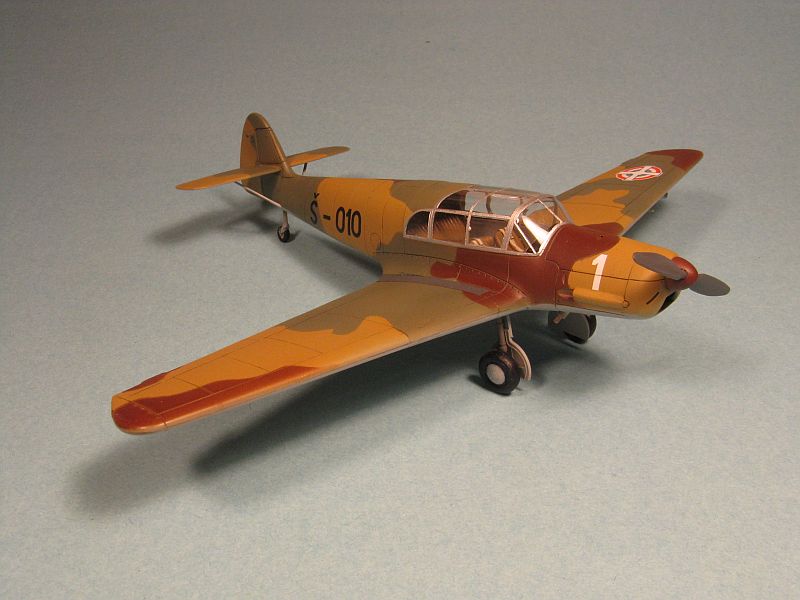Manufacturer: Eduard
Product: 1/48 Messerschmitt Bf-108B “Taifun” Profipack Boxing 8054
MSRP: $29.95
Reviewed by: Pablo Bauleo Eduard has re-boxed its nice Taifun, in the profipack format this time with new, very attractive markings and new pre-painted photoetch details. You also get pre-cut, self-adhesive masks for the canopy, which makes the tedious work of masking the canopy a simple, quick and relaxing task.
This kit has been around for several years (probably more than a decade by now) but the molds hold fine. There was no flash in my sample and the engraved panel lines are crisp and clean. As with all the profipack kits, you get the option of replacing parts with photoetch details, but you still get all the parts in plastic if you are not comfortable with PE.
You also get a full engine, which is a small kit in itself. You want to assemble the engine, otherwise you will see a void in the nose when looking at the model straight from the front.
Beware that there are not many alignment pins in the fuselage, so take your time when gluing the fuselage sides to avoid having a step that would require sanding.
I only had a fit issue with the cockpit tub, as it interfered with the wheels well which are molded together with the bottom part of the wing. Some modelers have reported this issue, while some others have not run into it.
I would suggest that you glue the fuselage halves together, assemble the full cockpit (w/o gluing the cockpit sides), assemble the wings (top and bottom parts) and then dry-fit the major components together. If you have fit issues, remove some plastic from the bottom of cockpit tub to allow the cockpit tub to fit the wheel well better. Sanding of the cockpit sides might help too. It is very easy to get a perfect, step-free wing root if you do that.
I painted my model with enamels, in the very colorful markings of the Royal Yugoslavian Air Force (great choice of markings Eduard!). The decals were applied over a coat of Future and behaved flawlessly, reacting well to setting solutions. The decals also have very good color density and registry. I applied the wing decal over the camouflage delineation mark and no color can be seen through the decal. I finished with an oil wash on the panel lines and I kept the model fairly clean, as it is depicted prior to the German invasion in 1941.
In summary: This kit is great. Assembly is simple and straightforward. I did have a fit issue, but it was easy to overcome. The pre-painted PE makes detailing an easy task. This is a good choice of a kit to cut your teeth in PE, as it is pre-painted and there are no folds or complex forms needed. The pre-cut masks for the canopy are a great help too.
If you have a few kits under your belt, you should have no problems turning this kit into a show-stopper. Highly recommended to everyone but the absolute beginner.
I would like to thank Eduard and IPMS/USA for the review sample.





















































